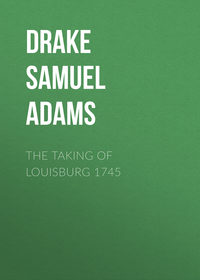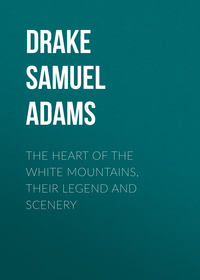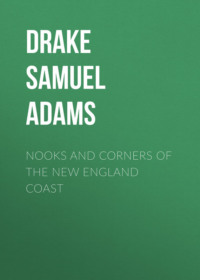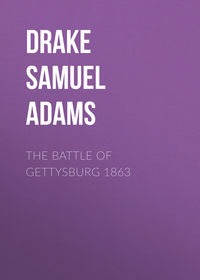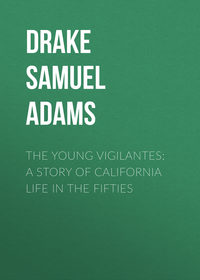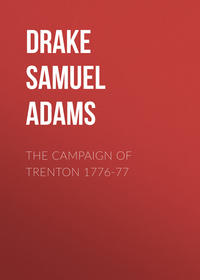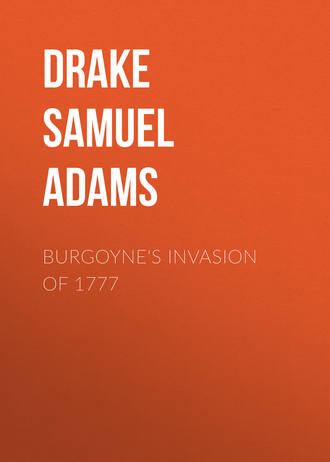 полная версия
полная версияBurgoyne's Invasion of 1777
It must be allowed that this plan was well conceived; yet its success depended so much upon all the parts working in harmony together, that to have set it in motion, without consultation or clear understanding between the generals who were to execute it, is inconceivable. At a distance of three thousand miles from the scene of war, the British cabinet undertook to direct complicated military operations, in which widely separated armies were to take part. General Burgoyne received his orders on the spot. General Howe did not receive his until the 16th of August; his army was then entering Chesapeake Bay. Burgoyne was being defeated at Bennington, at the time Howe was reading his despatch, and learning from it what he had not known before; namely, that he was expected to coöperate with the army of Burgoyne. These facts will so sufficiently illustrate the course that events were taking, as to foreshadow their conclusion to the feeblest understanding.
In order to make the war more terrible to the Americans, the British cabinet decided to use the Indians of Canada, and the Great Lakes, against them. Not even the plea of military necessity could reconcile some Englishmen to letting loose these barbarians upon the colonists. Though enemies, they were men. Lord Chatham, the noblest Englishman of them all, cried out against it in Parliament. "Who is the man," he indignantly asked, "who has dared to associate to our arms the tomahawk and scalping-knife of the savage?" All knew he meant the prime minister, and, behind him, the king himself. Had not King George just said that any means of distressing the Americans must meet with his approval?
II.
BURGOYNE'S ARMY
Having thus outlined the plan of invasion, let us now look at the means allotted for its execution. There were in Canada ten thousand British soldiers; in New York, thirty thousand. Burgoyne was to take with him seven thousand, of whom three thousand were Germans in the pay of England.15 In discipline, spirit, and equipment, this was by far the best little army that had yet taken the field in America.
Good judges said that England might be searched through and through before such battalions could be raised. Forty cannon, splendidly served and equipped, formed its artillery train. All the generals, and most of the soldiers, were veterans. In short, nothing that experience could suggest, or unlimited means provide, was omitted to make this army invincible. It was one with which Burgoyne felt he could do anything, and dare everything.
Besides these regular troops, we have said the government had authorized and even attempted to justify to the world, the employment of Indians. Four hundred warriors joined the army when it marched, and as many more when it reached Lake Champlain. They were to scour the woods, hang like a storm cloud about the enemy's camps, and discover his every movement. For this service they had no equals. In the woods they could steal upon an enemy unawares, or lie in wait for his approach. In the field they were of little use. Much of the terror they inspired came from the suddenness of their onset, their hideous looks and unearthly war-cries, and their cruel practice of scalping the wounded.
To these were added about an equal number of Canadians, and American refugees, who were designed to act as scouts, skirmishers, or foragers, as the occasion might require. Being well skilled in bush-fighting, they were mostly attached to Frazer's corps, for the purpose of clearing the woods in his front, getting information, or driving in cattle. With his Indians and irregulars,16 Burgoyne's whole force could hardly have numbered less than ten thousand men.
Taken as a whole, this army was justly thought the equal of twice its own number of raw yeomanry, suddenly called to the field from the anvil, the workshop, or the plough. Its strongest arm was its artillery; its weakest, its Indian allies.
Burgoyne divided his force into three corps, commanded by Generals Frazer, Phillips, and Riedesel, – all excellent officers. Frazer's corps was mostly made up of picked companies, taken from other battalions and joined with the 24th regiment of the line. As its duty was of the hardest, so its material was of the best the army could afford. Next to Burgoyne, Frazer was, beyond all question, the officer most looked up to by the soldiers; in every sense of the word, he was a thorough soldier. His corps was, therefore, Burgoyne's right arm. Phillips commanded the artillery; and Riedesel, the Germans.
In the middle of June this army embarked on Lake Champlain. Of many warlike pageants the aged mountains had looked down upon, perhaps this was the most splendid and imposing. From the general to the private soldier, all were filled with high hopes of a successful campaign. In front, the Indians, painted and decked out for war, skimmed the lake in their light canoes. Next came the barges containing Frazer's corps, marshalled in one regular line, with gunboats flanking it on each side; next, the Royal George and Inflexible frigates, with other armed vessels forming the fleet. Behind this strong escort, the main body, with the generals, followed in close order; and, last of all, came the camp followers, of whom there were far too many for the nature of the service in hand.
In the distance the American watch-boats saw this gallant array bearing down upon them, in the confidence of its power. Hastening back to Ticonderoga, the word was passed along the lines to prepare for battle.
For the Mohawk Valley expedition, St. Leger, who led it, took with him about seven hundred regular troops, two hundred loyalists, and eight guns. At Oswego, seven hundred Indians of the Six Nations joined him. With these, St. Leger started in July for Fort Stanwix, which barred his way to the Hudson, just as Ticonderoga blocked Burgoyne's advance on the side of Lake Champlain.
III.
THE FALL OF TICONDEROGA
(July 5, 1777.)A hundred years ago, the shores of Lake Champlain were for the most part a wilderness. What few settlements did exist were mostly grouped about the southeast corner of the lake, into which emigration had naturally flowed from the older New England States. And even these were but feeble plantations,17 separated from the Connecticut valley by lofty mountains, over which one rough road led the way.
Burgoyne's companions in arms have told us of the herds of red deer seen quietly browsing on the hillsides; of the flocks of pigeons, darkening the air in their flight; and of the store of pike, bass, and maskelonge with which the waters of the lake abounded. At one encampment the soldiers lived a whole day on the pigeons they had knocked off the trees with poles. So the passage of the lake must have seemed more like a pleasure trip to them than the prelude to a warlike campaign.
In his way up the lake, Burgoyne landed at the River Bouquet, on the west shore, where for some days the army rested.
To this rendezvous, large numbers of Indians had come to join the expedition. It was indispensable to observe the customs which had always prevailed among these peoples when going to war. So Burgoyne made them a speech, gave them a feast, and witnessed the wild antics of their war dance.
He forbade their scalping the wounded, or destroying women and children. They listened attentively to his words, and promised obedience; but these commands were so flatly opposed to all their philosophy of war, which required the extinction of every human feeling, that Burgoyne might as well have bidden the waters of the lake flow backward, as expect an Indian not to use his scalping-knife whenever an enemy lay at his mercy.
Still, it is to Burgoyne's credit that he tried to check the ferocity of these savages, and we would also charitably believe him at least half ashamed of having to employ them at all, when he saw them brandishing their tomahawks over the heads of imaginary victims; beheld them twisting their bodies about in hideous contortions, in mimicry of tortured prisoners; or heard them howling, like wild beasts, their cry of triumph when the scalp is torn from an enemy's head.
While thus drawing the sword with one hand, Burgoyne took his pen in the other. He drew up a paper which his Tory agents were directed to scatter among the people of Vermont, many of whom, he was assured, were at heart loyal to the king. These he invited to join his standard, or offered its protection to all who should remain neutral. All were warned against driving off their cattle, hiding their corn, or breaking down the bridges in his way. Should they dare disobey, he threatened to let loose his horde of savages upon them. Such a departure from the rules of honorable warfare would have justified the Americans in declaring no quarter to the invaders.
Well aware that he would not conquer the Americans with threats, Burgoyne now gave the order to his army to go forward. His view of what lay before him might be thus expressed: The enemy will, probably, fight at Ticonderoga. Of course I shall beat them. I will give them no time to rally. When they hear St. Leger is in the valley, their panic will be completed. We shall have a little promenade of eight days, to Albany.
On June 29 the army was near Ticonderoga. This day Burgoyne made a stirring address to his soldiers, in which he gave out the memorable watchword, "This army must not retreat."
The next day, Frazer's corps landed in full view of the fortress. The rest of the army was posted on both sides of the lake, which is nowhere wider than a river as the fortress is approached. The fleet kept the middle of the channel. With drums beating and bugles sounding, the different battalions took up their allotted stations in the woods bordering upon the lake. When night fell, the watch-fires of the besiegers' camps made red the waters that flowed past them. But as yet no hostile gun boomed from the ramparts of Ticonderoga.
What was going on behind those grim walls which frowned defiance upon the invaders? General Gates was no longer there to direct. General St. Clair18 was now in command of perhaps four thousand effective men, with whom, nevertheless, he hoped to defend his miles of intrenchments against the assaults of twice his own numbers. His real weakness lay in not knowing what point Burgoyne would choose for attack, and he had been strangely delinquent in not calling for reënforcements until the enemy was almost at the gates of the fortress itself.
Burgoyne knew better than to heedlessly rush upon the lines that had proved Abercromby's destruction.19 He knew they were too strong to be carried without great bloodshed, and meant first to invest the fortress, and after cutting off access to it on all sides, then lay siege to it in regular form.
July 2, Mount Hope seized.To this end, Frazer's corps was moved up to within cannon-shot of the works. His scouts soon found a way leading through old paths,20 quite round the rear of the fortress, to the outlet of Lake George. This was promptly seized. After a little skirmishing, the enemy planted themselves firmly, on some high ground rising behind the old French lines, on this side; thus making themselves masters of the communication with Lake George, and enclosing the fortress on the rear or land side. While this was going on, on the west shore, Riedesel's Germans were moved up still nearer Mount Independence, on the Vermont shore, thus investing Ticonderoga on three sides.
A more enterprising general would never have permitted his enemy to seize his communications with Lake George, without making a struggle for their possession, but St. Clair appears to have thought his forces unequal to the attempt, and it was not made. The disaster which followed was but the natural result.
Mount Defiance occupied.Just across the basin formed by the widening of the outlet of Lake George, a steep-sided mountain rises high above all the surrounding region. Its summit not only looks down upon the fortress, in every part, but over all its approaches by land or water. Not a man could march without being distinctly seen from this mountain. Yet, to-day, the eye measures its forest-shagged sides, in doubt if they can be scaled by human feet. Indeed, its ascent was so difficult that the Americans had neglected to occupy it at all. This is Mount Defiance, the most commanding object for miles around.
July 5.Burgoyne's engineers could not help seeing that if artillery could be got to the top of this mountain, Ticonderoga was doomed. They reconnoitred it. Though difficult, they said it might be done. St. Clair's timidity having given them the way to it, the British instantly began moving men and guns round the rear of the fortress, and cutting a road up the mountain-side. The work was pushed forward day and night. It took most of the oxen belonging to the army to drag two twelve-pounders up the steep ascent, but when they were once planted on the summit, Ticonderoga lay at the mercy of the besiegers.
July 6.When St. Clair saw the enemy getting ready to cannonade him from Mount Defiance, he at once gave orders to evacuate the fortress21 under cover of the night. Most of the garrison retreated over the bridge leading to Mount Independence, and thence by the road to Hubbardton. What could be saved of the baggage and army stores was sent off to Skenesborough, by water. Hurry and confusion were everywhere, for it was not doubted that the enemy would be upon them as soon as daylight should discover the fortress abandoned. This happened at an early hour of the morning. The British instantly marched into the deserted works, without meeting with the least resistance. Ticonderoga's hundred cannon were silent under the menace of two. Burgoyne was now free to march his victorious battalions to the east, the west, or the south, whenever he should give the order.
IV.
HUBBARDTON
(July 7, 1777.)Not doubting he would find Skenesborough still in our possession, St. Clair was pushing for that place with all possible speed. He expected to get there by land, before the enemy could do so by water; then, after gathering up the men and stores saved from Ticonderoga, St. Clair meant to fall back toward Fort Edward, where General Schuyler,22 his superior officer, lay with two thousand men.
This was plainly St Clair's true course. Indeed, there was nothing else for him to do, unless he decided to abandon the direct route to Albany altogether. So St. Clair did what a good general should. He resolved to throw himself between Burgoyne and Schuyler, whose force, joined to his own, would thus be able, even if not strong enough to risk a battle, at least to keep up a bold front toward the enemy.
Though Burgoyne really knew nothing about Schuyler's force, he was keenly alive to the importance of cutting off the garrison of Ticonderoga from its line of retreat, and, if possible, of striking it a disabling blow before it could take up a new position. St. Clair counted on stealing a march before his retreat could be interfered with. He also depended on the strength of the obstructions at the bridge23 of Ticonderoga to delay the enemy's fleet until his own could get safely to Skenesborough. In both expectations, St. Clair was disappointed.
July 6.In the first place, Burgoyne had sent Frazer out in pursuit of him, as soon as the evacuation was discovered; in the second, Burgoyne's gunboats had hewed their way through the obstructions by nine in the morning, and were presently crowding all sail after the American flotilla, under command of Burgoyne himself.
Riedesel's camp, we remember, lay on the Vermont side, and so nearest to Mount Independence, and St. Clair's line of retreat. Burgoyne, therefore, ordered Riedesel to fall in behind Frazer, who had just marched, and give that officer any support he might be in want of.
Thus, most of the hostile forces were in active movement, either by land or water, at an early hour of the sixth. Let us first follow Frazer, in his effort to strike the American rear.
Frazer had with him eight hundred and fifty men of his own corps. He pushed on so eagerly that the slow-moving Germans were far in the rear when the British halted for the night, near Hubbardton. The day had been sultry, the march fatiguing. Frazer's men threw themselves on the ground, and slept on their arms.
St. Clair had reached Hubbardton the same afternoon, in great disorder. He halted only long enough for the rearguard to come up, and then hastened on, six miles farther, to Castleton, leaving Warner,24 with three regiments, to cover his retreat. Instead of keeping within supporting distance of the main body, Warner foolishly decided to halt for the night where he was, because his men were tired, thus putting a gap of six miles between his commander and himself.
Warner did not neglect, however, to fell some trees in front of his camp, and this simple precaution, perhaps, proved the salvation of his command the next day.
July 7.At five in the morning, Frazer's scouts fell upon Warner's pickets while they were cooking their breakfasts, unsuspicious of danger. The surprise was complete. With their usual dash, Frazer's men rushed on to the assault, but soon found themselves entangled among the felled trees and brushwood, behind which the Americans were hurriedly endeavoring to form. At the moment of attack, one regiment made a shameful retreat. The rest were rallied by Warner and Francis,25 behind trees, in copses, or wherever a vantage-ground could be had. As the combat took place in the woods, the British were forced to adopt the same tactics. Musket and rifle were soon doing deadly work in their ranks, every foot of ground was obstinately disputed, and when they thought the battle already won they found the Americans had only just begun to fight.
For three hours, eight hundred men maintained a gallant and stubborn fight against the picked soldiers of Burgoyne's army, each side being repeatedly driven from its ground without gaining decided advantage over the other. Nor would Frazer have gained the day, as he at length did, but for the timely arrival of the Germans. Indeed, at the moment when the British were really beaten and ready to give way, the sound of many voices, singing aloud, rose above the din of battle, and near at hand. At first neither of the combatants knew what such strange sounds could mean. It was Riedesel's Germans advancing to the attack, chanting battle hymns to the fierce refrain of the musketry and the loud shouts of the combatants. Fifty fresh men would have turned the scale to either side. This reënforcement, therefore, decided the day. Being now greatly outnumbered, the Americans scattered in the woods around them.
Although a defeat, this spirited little battle was every way honorable to the Americans, who fought on until all hope of relief had vanished. A single company would have turned defeat into victory, when to the British, defeat in the woods, thirty miles from help, meant destruction. Even as it was, they did not know what to do with the victory they had just won, with the loss of two hundred men, killed and wounded, seventeen of whom were officers. They had neither shelter nor medicines for the wounded, nor provisions for themselves. The battle had exhausted their ammunition, and every moment was expected to bring another swarm of foes about their ears.
The Americans had three hundred men killed and wounded, and many taken. The brave Colonel Francis, who had so admirably conducted the retreat from Ticonderoga, was killed while rallying his men. Seldom has a battle shown more determined obstinacy in the combatants, seldom has one been more bloody for the numbers engaged.
While Frazer was thus driving St. Clair's rearguard before him on the left, the British were giving chase to the American flotilla on the lake. This had hardly reached Skenesborough, encumbered with the sick, the baggage, and the stores, when the British gunboats came up with, and furiously attacked, it. Our vessels could not be cleared for action or make effective resistance. After making what defence they could, they were abandoned, and blown up by their crews. Skenesborough was then set on fire, the Americans making good their retreat to Fort Anne,26 with the loss of all their stores.
St. Clair heard of Warner's defeat and of the taking of Skenesborough almost at the same hour. His first plan had wholly miscarried. His soldiers were angry and insubordinate, half his available force had been scattered at Hubbardton, his supplies were gone, his line of retreat in the enemy's hands. Finding himself thus cut off from the direct route to Fort Edward, he now marched to join Schuyler by way of Rutland, Manchester, and Bennington. This he succeeded in doing on the twelfth, with about half the men he had led from Ticonderoga. Warner, too, brought off the shattered remnant of his command to Bennington.
On his part, Schuyler had promptly sent a reënforcement to Fort Anne, to protect St. Clair's retreat, as soon as he knew of it. These troops soon found other work on their hands than that cut out for them.
July 7.Burgoyne was determined to give the Americans no time either to rally, or again unite their scattered bands in his front. Without delay, one regiment was pushed forward to Fort Anne, on the heels of the fugitives who had just left Skenesborough in flames. When this battalion reached the fort, instead of waiting to be attacked, the Americans sallied out upon it with spirit, and were driving it before them in full retreat, when the yells of some Indians, who were lurking in the neighboring woods, spread such a panic among the victors that they gave up the fight, set fire to Fort Anne, and retreated to Fort Edward with no enemy pursuing them. The defeated British then fell back to Skenesborough, so that each detachment may be said to have run away from the other.
General Burgoyne had much reason to be elated with his success thus far. In one short week he had taken Ticonderoga, with more than one hundred cannon; had scattered the garrison right and left; had captured or destroyed a prodigious quantity of warlike stores, the loss of which distressed the Americans long after; had annihilated their naval armament on the lake, and had sown dismay among the neighboring colonies broadcast. It was even a question whether there was any longer a force in his front capable of offering the least resistance to his march.
With these exploits, the first stage of the invasion may be said to have ended. If ever a man had been favored by fortune, Burgoyne was that man. The next stage must show him in a very different light, as the fool of fortune, whose favors he neither knew how to deserve when offered him, nor how to compel when withheld.
V.
FACING DISASTER
One of Washington's most trusted generals said, and said truly, that it was only through misfortune that the Americans would rise to the character of a great people. Perhaps no event of the Revolution more signally verified the truth of this saying, than the fall of Ticonderoga.
Let us see how this disaster was affecting the Northern States. In that section, stragglers and deserters were spreading exaggerated accounts of it on every side. In Vermont, the settlers living west of the mountains were now practically defenceless. Burgoyne's agents were undermining their loyalty; the fall of Ticonderoga had shaken it still more. Rather than abandon their farms, many no longer hesitated to put themselves under British protection. Hundreds, who were too patriotic to do this, fled over the mountains, spreading consternation as they went. From Lake Champlain to the New England coast, there was not a village which did not believe itself to be the especial object of Burgoyne's vengeance. Indeed, his name became a bugbear, to frighten unruly children with.
Of those who had been with the army, many believed it their first duty to protect their families, and so went home. Numbers, who were on the way to Ticonderoga, turned back, on hearing that it was taken. To Burgoyne, these results were equal to a battle gained, since he was weakening the Americans, just as surely, in this way, with entire safety to himself.
In despair, those settlers who stood faithful among the faithless, turned to their New Hampshire brethren. "If we are driven back, the invader will soon be at your doors," they said. "We are your buckler and shield. Our humble cabins are the bulwark of your happy firesides. But our hearts fail us. Help us or we perish!"
Could Schuyler do nothing for these suffering people? To let them be ruined and driven out was not only bad policy, but worse strategy. He knew that Burgoyne must regard these settlements with foreboding, as the home of a hostile and brave yeomanry, whose presence was a constant threat to him. To maintain them, then, was an act of simplest wisdom. Schuyler could ill spare a single soldier, yet it was necessary to do something, and that quickly, for all New England was in a tumult, and Burgoyne said to be marching all ways at once. What wonder, since Washington himself believed New England to be the threatened point!27



